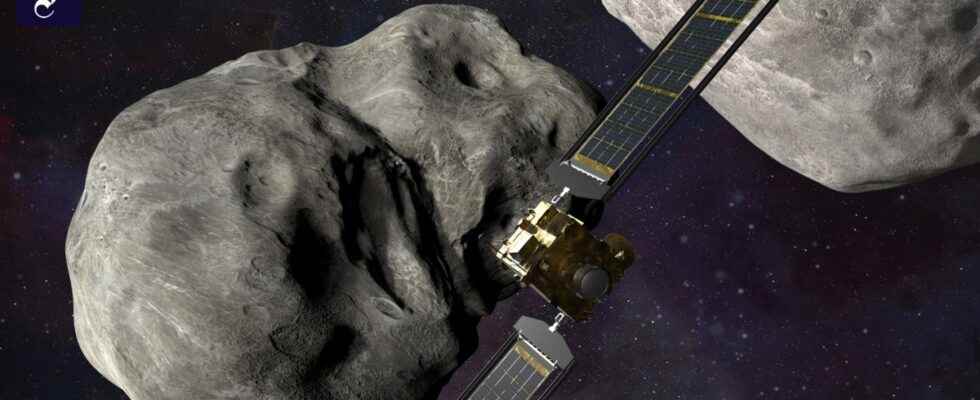DAccording to the US space agency Nasa, the first intentionally caused collision of a spacecraft with an asteroid was a success: The impact of the Dart probe in September reduced the orbit of the asteroid moon Dimorphos, said Nasa boss Bill Nelson on Tuesday.
While it used to take Dimorphos eleven hours and 55 minutes to orbit its big brother Didymos, it now takes eleven hours and 23 minutes. “This mission shows that NASA is trying to be prepared for whatever the universe throws at us,” said the agency’s director, Bill Nelson. “I think NASA has proven that we mean business as defenders of our planet.”
He called the mission’s success a “watershed moment” in protecting humanity from an asteroid impact. In the coming weeks and months, the impact of the collision will now be further investigated. In 2024, the similar mission “Hera” of the European Space Agency Esa is to start for even more detailed research.
Strategy to defend the earth
The experiment took place around ten million kilometers from Earth. The 750-kilogram “Dart” spacecraft, about the size of a refrigerator, crashed directly into Dimorphos at a speed of more than 23,000 kilometers per hour and self-destructed Test objects from space. However, the 160 meter wide asteroid did not pose a threat to Earth.
The successful deflection of orbit by “Dart” proves that Earth could be protected in the event of an Earth-proximity object, provided the deflection mission is initiated early enough and the target is not too large. “The advance warning time is really critical here so that this type of asteroid deflection can be used in the future as part of a much larger planetary defense strategy,” Nelson said.
NASA and researchers around the world have been dealing with the question of how to defend against an asteroid for many years. An asteroid impact around 66 million years ago, for example, is considered by scientists to be the leading theory as to why the dinosaurs became extinct. Scientists don’t currently know of any asteroid that could be heading straight for Earth any time soon – but researchers have identified around 27,000 asteroids near our planet, around 10,000 of them with a diameter of more than 140 meters.
